Why Does a Lever Make Things Easy
Simple Machines - Levers
Children on teeter-totter (axel2001, iStockphoto)
Children on teeter-totter (axel2001, iStockphoto)
How does this align with my curriculum?
The lever is a type of simple machine. Learn about the different classes of levers and how they provide mechanical advantage.
Simple machines are mechanical devices that are used to makework easier. Combinations of two or more simple machines working together are calledcompound machines. These machines create systems for different kinds of movement to occur whenforce is applied to aload. Both simple and compound machines make work easier by changing the size or direction of the force. There are six standard types of simple machines. They are the:
- Lever
- Wheel and axle
- Pulley
- Inclined plane
- Wedge
- Screw
Let us consider the first of these simple machines: the lever.
Misconception Alert
When you hear the word "machine" do you automatically think of something with a motor, like a forklift or a washing machine? Machines do not have to have motors. In fact, a machine is any device that transmits or modifies force.
What is a Lever?
A lever is a simple machine made of a rigidbeamand afulcrum. Theeffort(input force) andload(output force) are applied to either end of the beam. The fulcrum is the point on which the beampivots. When an effort is applied to one end of the lever, a load is applied at the other end of the lever. This will move a mass upward. Levers rely ontorque for their operation. Torque is the amount of force required to cause an object to rotate around itsaxis(or pivot point).
What is mechanical advantage?
A lever provides mechanical advantage.Mechanical advantage refers to how much a simple machine multiplies an applied force. The location of the effort, load, and fulcrum will determine the type of lever and the amount of mechanical advantage the machine has. The farther the effort is away from the fulcrum, the easier it is to move the load.
Mechanical advantage can be calculated using this formula:
If the distance from the effort to the fulcrum is greater than the distance from the load to the fulcrum, then the lever has a mechanical advantage. In other words, the ratio of these two distances is greater than one. This means that a long distance from the effort to the fulcrum and a short distance from the load to the fulcrum will allow a small effort to move a large load!
First Class Levers
There are three types, orclasses of levers.
In afirst class lever, the fulcrum is located between the load and the effort.
If the fulcrum is closer to the load, then less effort is needed to move the load a shorter distance. If the fulcrum is closer to the effort, then more effort is needed to move the load a greater distance. A teeter-totter, a car jack, and a crowbar are all examples of first class levers. First class levers are very useful for lifting large loads with little effort.
Second Class Levers
In asecond class lever, the load is located between the effort and the fulcrum.
If the load is closer to the fulcrum than the effort, then less effort will be required to move the load. If the load is closer to the effort than the fulcrum, then more effort will be required to move the load. A wheelbarrow, a bottle opener, and an oar are examples of second class levers.
Third Class Levers
In athird class lever, the effort is located between the load and the fulcrum.
If the fulcrum is closer to the load, then less effort is needed to move the load. If the fulcrum is closer to the effort, then the load will move a greater distance. A pair of tweezers, swinging a baseball bat or using your arm to lift something are examples of third class levers. These levers are useful for making precise movements.
Levers are very useful simple machines used for transferring force. You may not realize it, but you use levers every day!
References
Afework, B., Hanania, J., Stenhouse, K., & Donev, J. (2018, May 18). Lever. Energy Education.
Curley, R. (2017, June 26). Simple machines. Encyclopaedia Britannica.
SoftSchools.com (2019). Levers.
wrightrivinquister.blogspot.com
Source: https://letstalkscience.ca/educational-resources/backgrounders/simple-machines-levers

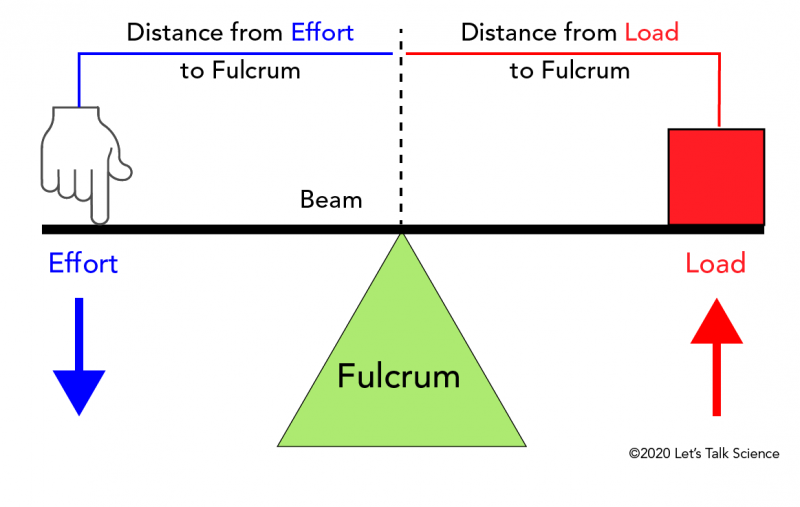
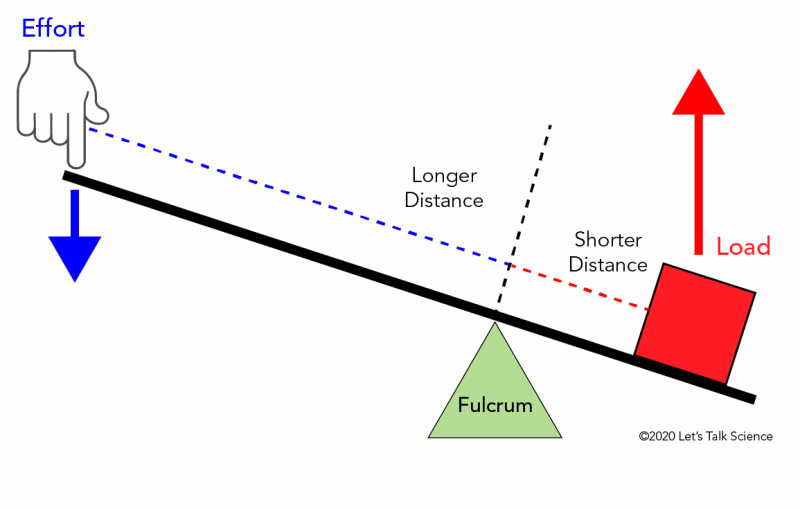
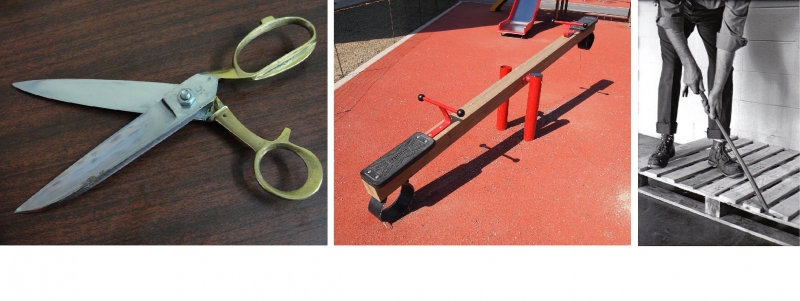
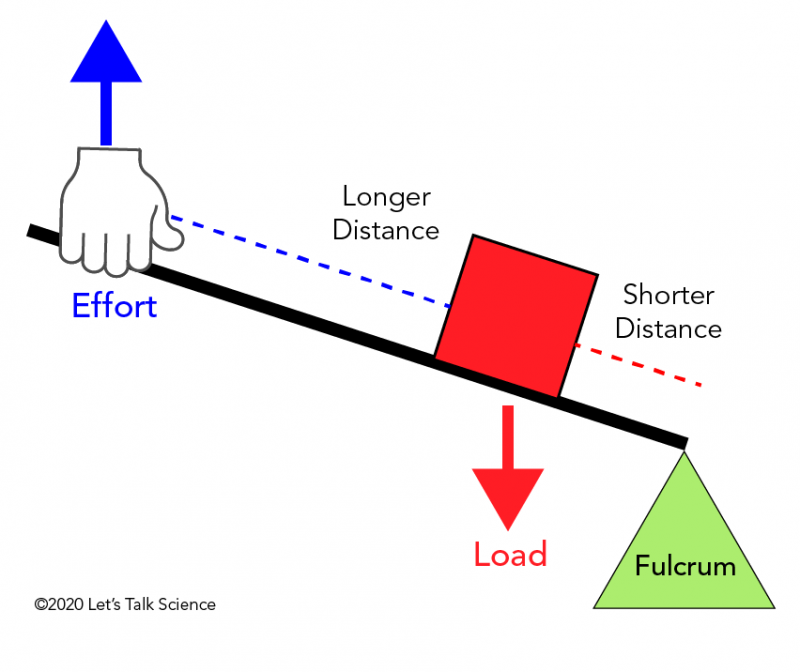

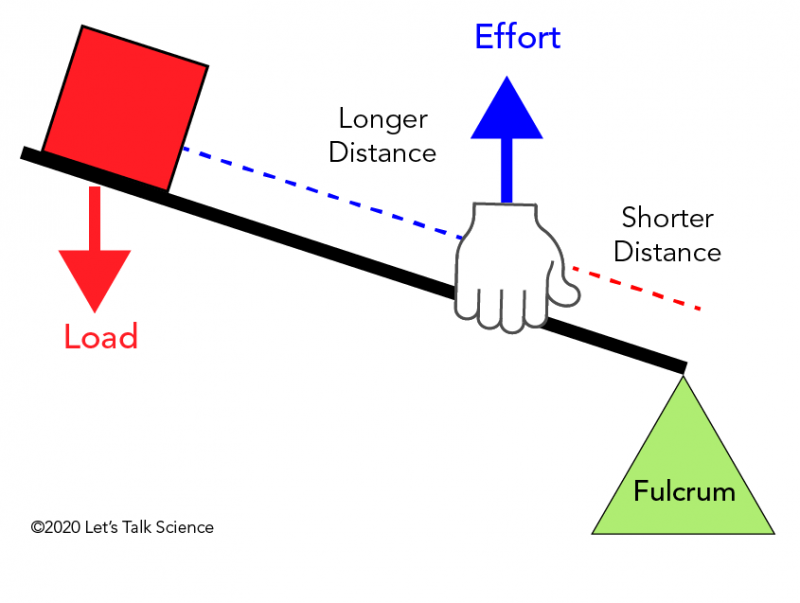
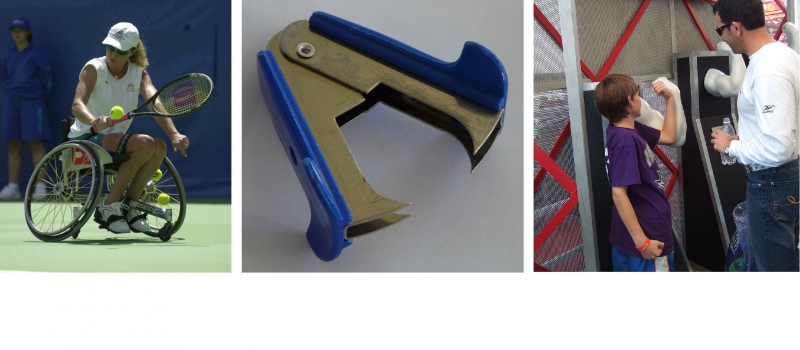
0 Response to "Why Does a Lever Make Things Easy"
Post a Comment